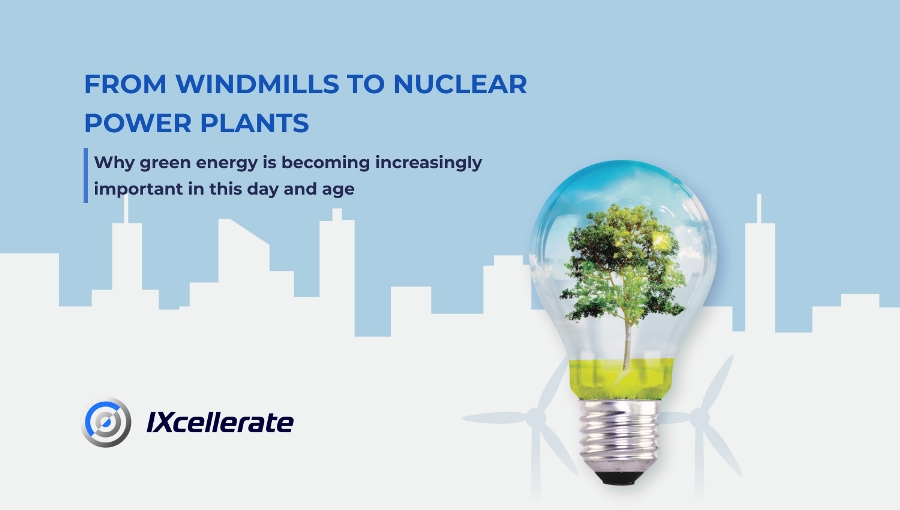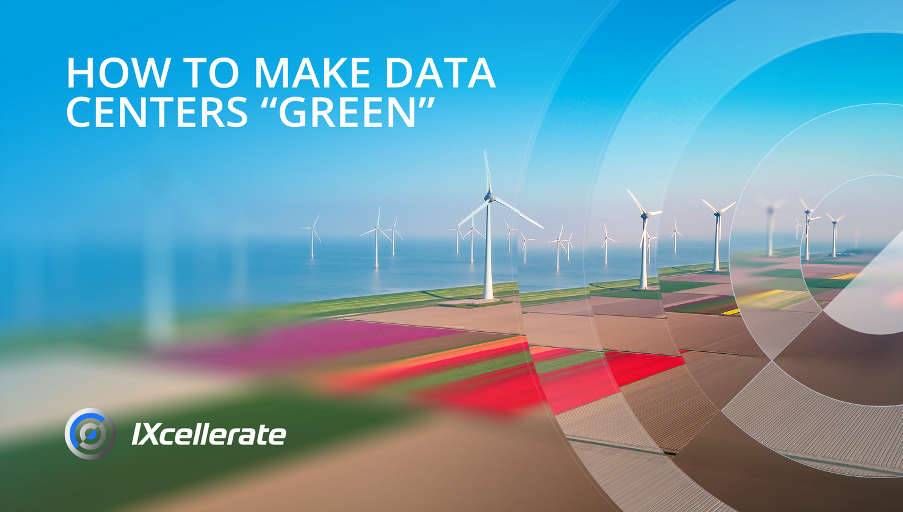or why green energy is becoming increasingly important in this day and age.

Renewable energy sources (RES)
are resources that, unlike organic fuels (such as oil, gas, coal and uranium ore), are inexhaustible and do not cause serious environmental damage. Among them are water, wind, sunlight, etc. Our forefathers built wind and water mills well before the advent of the steam engine; however, all those designs were low-capacity, and as time went by their energy output proved insufficient.
Once people learned to produce and burn fossil fuels, the use of wind-driven and other green machines was dramatically curtailed. And the latter half of the last century saw a surge of interest in them.
Green energy has been on the world’s agenda for several decades now, which is only natural: the greenhouse effect, air pollution and rising disease incidence are obviously no boon for mankind. According to 2021 figures, some 50 bln tonnes of greenhouse gases are released into the atmosphere annually, 70% of which is due to energy derived from fossil fuels. Scientists all over the world have been looking for alternatives to coal, oil and gas for many years now, all the more so because the mineral resources on our planet will all be gone in a hundred years or so. But the sun will not go out, the wind will not drop, and the ocean will not dry out. The only question is how to learn to take the best advantage of these resources using state-of-the-art solutions.
Five elements to save the world, or types of renewable energy
There are a great many sources of renewable energy, including tidal energy, convective available potential and cryogenic energy, but the following five are considered to be primary: apart from solar, wind and hydro energy, they include geothermal heat (geothermal energy) and biomass. Each of these sources has its advantages and limitations.
Solar energy
This is one of the most powerful types of RES and the cheapest. With the help of solar batteries, sunlight is converted to electricity and used to heat homes, light the streets etc. The effectiveness of such devices hinges on the climate; therefore, this type of energy is not very good for cities and countries with little yearly sunshine, such as Moscow, which averages a total of 72 sunny days a year.Wind energy
This is the earliest energy generation method that is known to mankind. The windmills have long been replaced with wind generators, which are used by half the world at least (China has the largest number of wind farms). The only problem is that strong winds do not blow everywhere all the time, which means that such energy has limited applications.Hydropower
Unlike wind, water is a fairly predictable resource; it can be reliably used to generate energy. In Russia, approximately 98% of all renewable energy comes from hydroelectric power stations. In Norway, too, virtually all electricity for manufacturing and cities comes from hydroenergy. The drawbacks of this type include construction costs and engineering challenges: any miscalculation can cause flooding in the surrounding areas, and dramatic fluctuations in the water tables adversely impact the aquatic flora and fauna.
Geothermal energy
Geothermal energy is generated within the Earth and heats underground sources. By drilling wells, people harvest hot steam and water and use them to heat indoor spaces or alternatively convert them to electric power. This is a great way to generate electricity in volcanic fields; to find a construction site, however, is no mean task, not least because of seismic activity.Biofuels
Biofuels are based on vegetative and animal biomass. This is the most utilized renewable resource in the global economy, which can be produced virtually in any country. However, these unconventional energy sources have a relatively low calorific value, as well as posing risks of environmental imbalance. For example, the manufacture of biomass from wood can reduce the forested area and result in atmospheric pollution.What colour is the atom?
Hypothetically, nuclear power can also be put on the list of renewable energy sources because it meets two key criteria of greenness: it is inexhaustible and causes zero greenhouse gas emissions. Some countries have already answered this question in the affirmative. In 2022, the European Commission admitted nuclear power to the green club too. The primary condition for membership is to meet the requirements for the transition to the carbon-free economy and net-zero power generation methods. However, the green status of atoms for peace has not been officially approved the world over, not by a long chalk. So far, Europe has been joined by China, Russia and Bangladesh only. At issue here is the disposal of radioactive waste and the reliability of nuclear power stations. Nuclear power generation does not create greenhouse gases, but it cannot be called safe as yet. A genuinely eco-friendly power source could become thermonuclear reactor, but it is still nowhere near commercial viability.Global greening plans
Renewable energy utilization is on the rise throughout world. Since 2012, more than 50% of all generating capacities being installed annually has been based on renewable sources. Over 20 years, investment in green energy products has grown virtually tenfold (from $33 bln to over $300 bln) and counting. According to forecasts from the International Energy Agency (IEA), green energy resources will increase to 2,400 GW by 2027 (this is approximately the total electricity generating capacity of China), and their share will reach 38% globally! The main setters of this trend are European countries, China, America and Canada. In China, for example, 76% of the total power capacity installed was green as early as 2021. In the USA, renewable energy is 21% of the total power generation, whereas NPSs account for 20%.
Russia cannot yet claim major achievements in this field: the share of renewable energy sources in the unified energy system of Russia does not exceed 1.5%. Availability of a large supply of useful resources, a lack of regulatory incentives and adequate investments are not conducive to environmental awareness.
Hope for wind, but keep mining coal
The renewable energy growth rates are highly impressive, but it would be premature to talk about complete replacement of exhaustible sources with inexhaustible ones. In the foreseeable future, the latter will simply lack capacity to meet mankind’s electricity needs, which will be rising 3% annually in 2023–2025 (IEA forecast). Besides, as recent experience shows, excessive dependence on environmentally friendly energy can cause a collapse: in 2021, the overcast and calm weather in Europe brought to a standstill the operation of wind generators and solar batteries, which caused a number of blackouts and a dramatic hike in gas prices.

«Swap one energy source for another is not the best strategy. The production of minerals continues to rise worldwide. Today the share of thermal power stations of all types in the global generation of electric power is 65%, with nuclear power accounting for 11%. The remaining 24% includes all of the renewable sources taken together, which can only be relied on as an additional resource».
Sergey Vyshemirsky, IXcellerate CTO.
Another major bar to a fast growth of environmentally friendly energy is its price. The achievement of carbon neutrality, planned by a number of countries for as early as 2050, will cost approximately $275 trln according to McKinsey’s forecast.
Green power in the data centre industry
Environmental concerns and the use of green technology are a headache not only for governments but also for businesses, and specifically data centres, which consume some 3% of the planet’s electric power, and in terms of negative environmental impact are on a par with air travel.
The above notwithstanding, due to the digitization of economies and the rising numbers of internet users, demand for the services of data centres keeps increasing. In this country alone, the DC market grew 28.1% to 89.1 bln rbl. last year, and plans for 2023–2024 provide for the addition of 32 thou. new rack units (according to the figures from iKS-Consulting).

The new normal incentivizes DC providers to look for innovative solutions to improve their own energy efficiency and achieve net zero.
One of such solutions is to use renewable energy sources. The trail is blazed here by IT giants such as Google, Microsoft and Apple, as well as a number of other major internationals. Here are but a few examples of data centres with the globally most popular energy efficiency certificate The Leadership in Energy & Environmental Design (LEED):
- Facebook’s data centre is situated 60 km from the Polar Circle on the bank of a river and uses an in-house hydroelectric power plant.
- Apple’s data centre in North Carolina (USA) generates 244 mln kWh of power per year using an in-house wind farm.
- Apple’s data centre in the town of Maiden (USA) set up for in-house needs two solar farms, each capable of generating 42 mln kWh of electric power per year.
- Verne Global’s data centre in Reykjavik is built next to geysers and fed by geothermal power stations.
- The Swiss data centre Swiss Fort Knox uses glacier water from an underground lake in its cooling systems.
DC energy efficiency can also be improved by upgrading the cooling systems, which account for about 40% of all power used by data centres. The most advanced solution here is thought to be the free-cooling process, which uses ambient air for data hall cooling.
The only option here that minimizes the environmental impact and provides renewable energy is nuclear power. And this trail has already been blazed. E.g., the Microsoft corporation intends to move in the near future from using electricity to using portable nuclear reactors to power its DCs, but as the first step to diversify its sources of electric power by going green, i.e. buying nuclear power on the market. In Russia, the use of nuclear power in DCs is pioneered by Rosatom. Many experts believe that siting data centres next to sources of nuclear power is the most promising strategy for the industry. Also, connecting data centres to various phases of NPS or GEPS [hydro-electric power station] provides full-scale category one power supply, which will make it possible to forgo using DGU (diesel generators) as standby power supplies.
The bottom line
DC operators factor into the design a multitude of variables, including the cost of energy, energy efficiency and environmental footprint. Special emphasis is also placed on redundancy schemes, which make it possible to minimize the risk of downtime and data loss, as well as provide standby power sources, cooling systems and networking equipment.
The optimal configuration for every location across the world is custom-designed – it can include various energy sources, such as solar panels, wind generators, and small-scale modular reactors. However, even the most reliable source will be unable to prevent service outages if the redundancy scheme does not provide for hot failover (such as diesel generators and UPS).

«The energy efficiency trend in the DC industry is quite clear, but without serious financial backing no data centre will be able to use renewable energy as a primary source of power supply. And not only because of the high cost, but because of the reliability issue. The data center, which is responsible for the integrity and data availability for its customers, cannot be dependent on the weather. No SLA will be able to arrange sunny and windy weather 365 days per year, which means that the industry cannot possibly rely on nature».
Sergey Vyshemirsky, IXcellerate CTO.
The redundancy scheme is more critical to uninterrupted operation and minimization of possible downtime than a mix and types of the energy sources used.
Questions and answers
- What risks and barriers are there to the promotion of green power?
For solar and wind power generation, this is first and foremost the volatility of output, which requires this kind of RES to be balanced using high-capacity storage systems, or with conventional generation. A greater issue is the recycling of RES waste (solar batteries, batteries for electric cars etc.); no procedures are yet in place for assessing its performance and the total environmental footprint. But the most obvious hurdle is construction project costs, specifically to build and set up solar and wind power stations.- How is the sector subsidized?
According to estimates from the OilPrice.com portal, the adoption of green solutions will cost the world $40 trln by 2050. The IEA believes that private capital will account for more than 70% of the investments. The main RES support measures include:1) green certificates,
2) reimbursement of the utility connection charge,
3) connection rates.
- What is the cost of green power?
Different methods for power generation are most often compared using the levelized cost of energy (LCOE) indicator. This is a measure of the average net present cost of electricity generation for a generator over its lifetime. According to IEA figures, the average LCOE for capacities to come online in 2025 will be:| ES | LCOE |
| Solar | $36/MWh |
| Geothermal | 37 |
| Gas | 38 |
| Hydro | 40 |
| Wind | 40 |
| Coal | 76 |
| Nuclear | 82 |